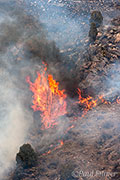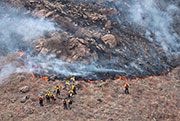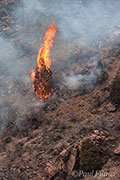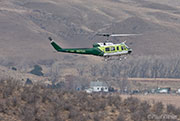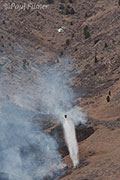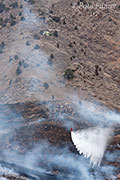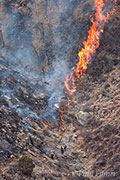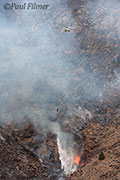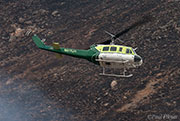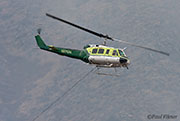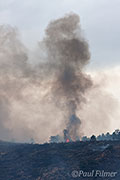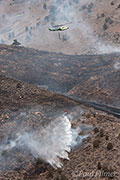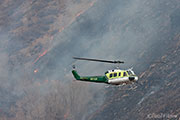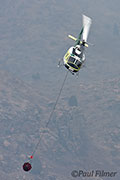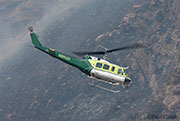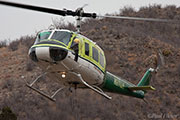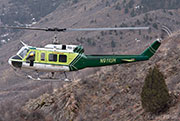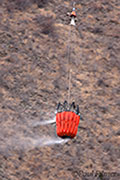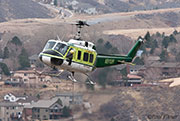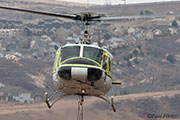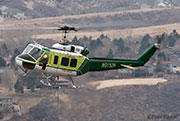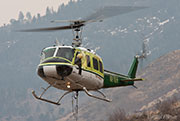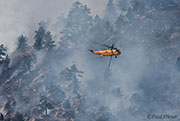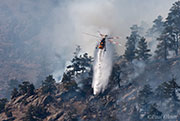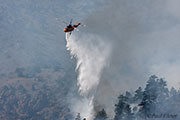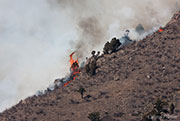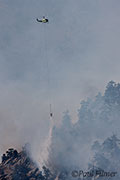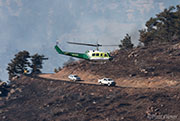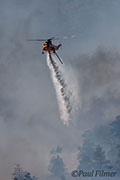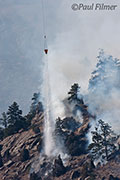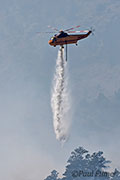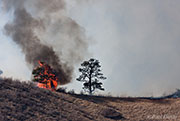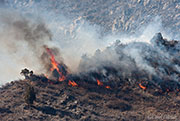It's not even the end of March and Colorado has already seen two wildfires that required aviation firefighting assets. Meanwhile the experts are suggesting that this season has all the ingredients of a busy one.
The Indian Gulch Fire started on Sunday 20th March, on the immediate westerly side of the city of Golden, Colorado. Most of the fire was centred on Mount Galbraith which is located between the Clear Creek and Golden Gate canyons.
A single engine air tanker (SEAT) was ordered by Jefferson County but unfortunately the aircraft on standby went tech while Tanker #6, a P-2 from Neptune Aviation, was also on standby at the nearby Jeffco Tanker Base. The County assessed that it wasn't needed however and so it was dispatched to Arizona later the same day.
In the meantime fire crews had hiked across difficult terrain, digging fire-lines to try and stop the fire spreading to nearby homes on the edge of Golden. The winds were blowing from an easterly direction however and the fire was still creeping upwind and even downhill, all of which was making a threat to Golden all the more likely. As the fire was in a location with no access by road there was therefore a clear need for aviation assets to help bring the fire under control.
A single UH-1H was called in from Douglas County and during the day it made around 60 drops from its bucket while taking direction from the fire-fighters on the ground and also dropping in areas where the pilot deemed necessary. The bucket can hold 324 gallons in total but is configured dependent on altitude and temperature - on Sunday they were operating the bucket at around 80% of capacity making each drop about 260 gallons.
Part way up Lookout Mountain a sizeable crowd had gathered to watch the action and as the chopper pilot dropped water our vantage point provided a great perspective of the fire and a first hand look at operations. On many occasions the crowd gave out gasps and cheers as the pilot laid the water in exactly the right spots.
Although we were less than a mile from the fire we were in no danger due to the wind direction, the speed of the fire and the terrain between us. Also, Forest Service spotters were on hand and already had decided on the parameters that would necessitate an evacuation of the area that we were in.
The UH-1 was dipping from a small pond at the rear of the Mountain Ridge sub-division which was less than sixty seconds flying time from the fire, and this was the reason it was able to drop so many loads on Sunday. Fire tenders were also topping up the eight foot deep pond at various times to make sure there was always plenty of water at hand. Permission had already been obtained to use ponds on the nearby Coors Brewery site, but using the pond avoided overflights of residential areas and was closer to the fire itself.
After the first day the fire's size was estimated at 550 acres but by Tuesday morning it had grown to 1200, and with less than 10% humidity and winds gusting to 35mph one can only wonder if the County will regret its decision to not use the heavy tanker when it was available. Quite often counties will not use heavy tankers due to the costs involved, but those same assets will be called in once the Federal agencies take over. Often, however, this can prove to be a false economy as by the time the fire is being managed at a Federal level it is very much larger and costs much more to deal with. It's clearly a difficult judgement call trying to balance the budget with the need to extinguish the fire.
Yesterday the SEAT became available but strong winds grounded air operations and the forecast for today was much the same. Pre-evacuation warnings have been sent out, so time will tell if letting the heavy tanker go was a prudent decision. If this fire continues for the next few days I'll try to add an update later.
23 March update:
The fire continued to be fought with the fire growing to 1502 acres but starting to be contained by the firefighters.
The Rampart Helicopter Services UH-1H continued to fly as in previous days and was joined by a type one helicopter, an SH-3H belonging to Croman Helicopters out of Oregon, which was flown up from Texas to assist. The two AT-502 SEATs remained on standby and flew Monday morning.
Wednesday saw just the UH-1H and SH-3H fly, but the rugged terrain coupled with the lack of roads saw all my attempts at photography thwarted. Most of the helicopters' work ended up being concentrated on the steep sides of the canyon that borders US6, and after a hike along Lookout Mountain I managed some passable shots.
On Thursday I gained access to the reservoir that the SH-3H had been dipping in the previous days, but after a couple of hours it became evident that no aerial assets were now needed on this fire. The firefighters on the ground ended up performing controlled burns from the base of US6 up the canyon sides as they were unable to halt the slow progress of the fire down the steep slopes with the helicopter operations and the terrain was far too steep for the firefighters on the ground.
Subscribe to receive updates via: e-mail list | Facebook | Instragram | Twitter
[photo/serial list]
